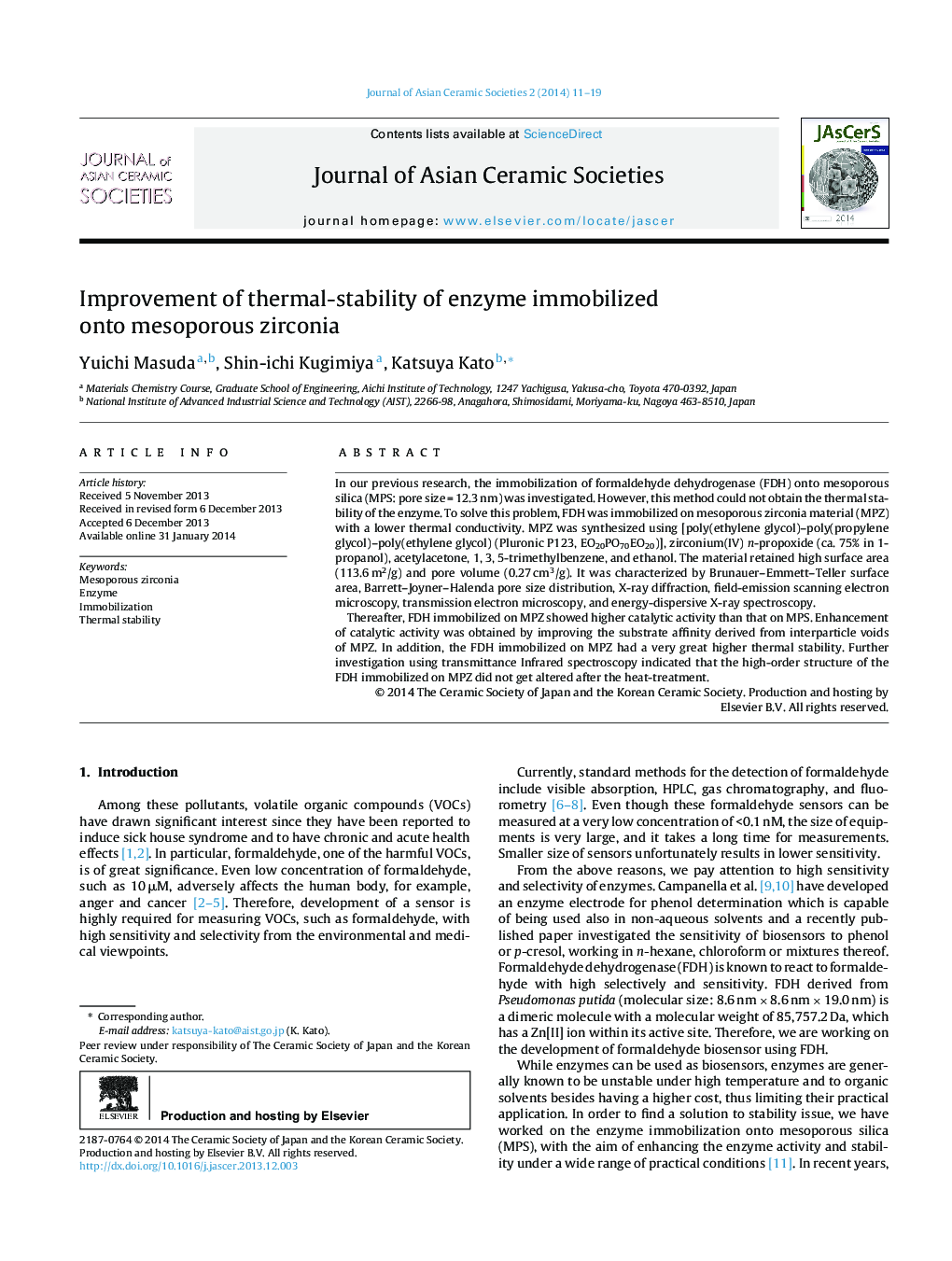| Article ID | Journal | Published Year | Pages | File Type |
|---|---|---|---|---|
| 1473367 | Journal of Asian Ceramic Societies | 2014 | 9 Pages |
In our previous research, the immobilization of formaldehyde dehydrogenase (FDH) onto mesoporous silica (MPS: pore size = 12.3 nm) was investigated. However, this method could not obtain the thermal stability of the enzyme. To solve this problem, FDH was immobilized on mesoporous zirconia material (MPZ) with a lower thermal conductivity. MPZ was synthesized using [poly(ethylene glycol)–poly(propylene glycol)–poly(ethylene glycol) (Pluronic P123, EO20PO70EO20)], zirconium(IV) n-propoxide (ca. 75% in 1-propanol), acetylacetone, 1, 3, 5-trimethylbenzene, and ethanol. The material retained high surface area (113.6 m2/g) and pore volume (0.27 cm3/g). It was characterized by Brunauer–Emmett–Teller surface area, Barrett–Joyner–Halenda pore size distribution, X-ray diffraction, field-emission scanning electron microscopy, transmission electron microscopy, and energy-dispersive X-ray spectroscopy.Thereafter, FDH immobilized on MPZ showed higher catalytic activity than that on MPS. Enhancement of catalytic activity was obtained by improving the substrate affinity derived from interparticle voids of MPZ. In addition, the FDH immobilized on MPZ had a very great higher thermal stability. Further investigation using transmittance Infrared spectroscopy indicated that the high-order structure of the FDH immobilized on MPZ did not get altered after the heat-treatment.
